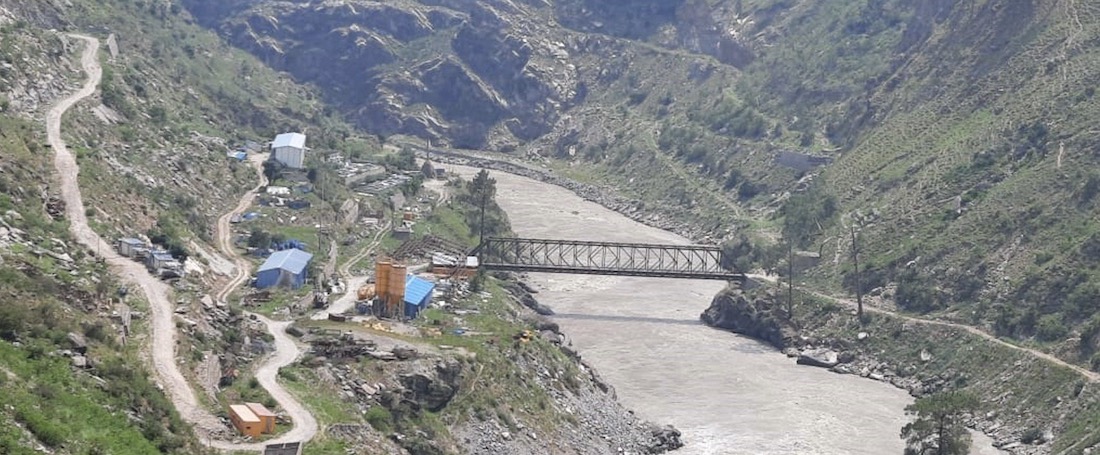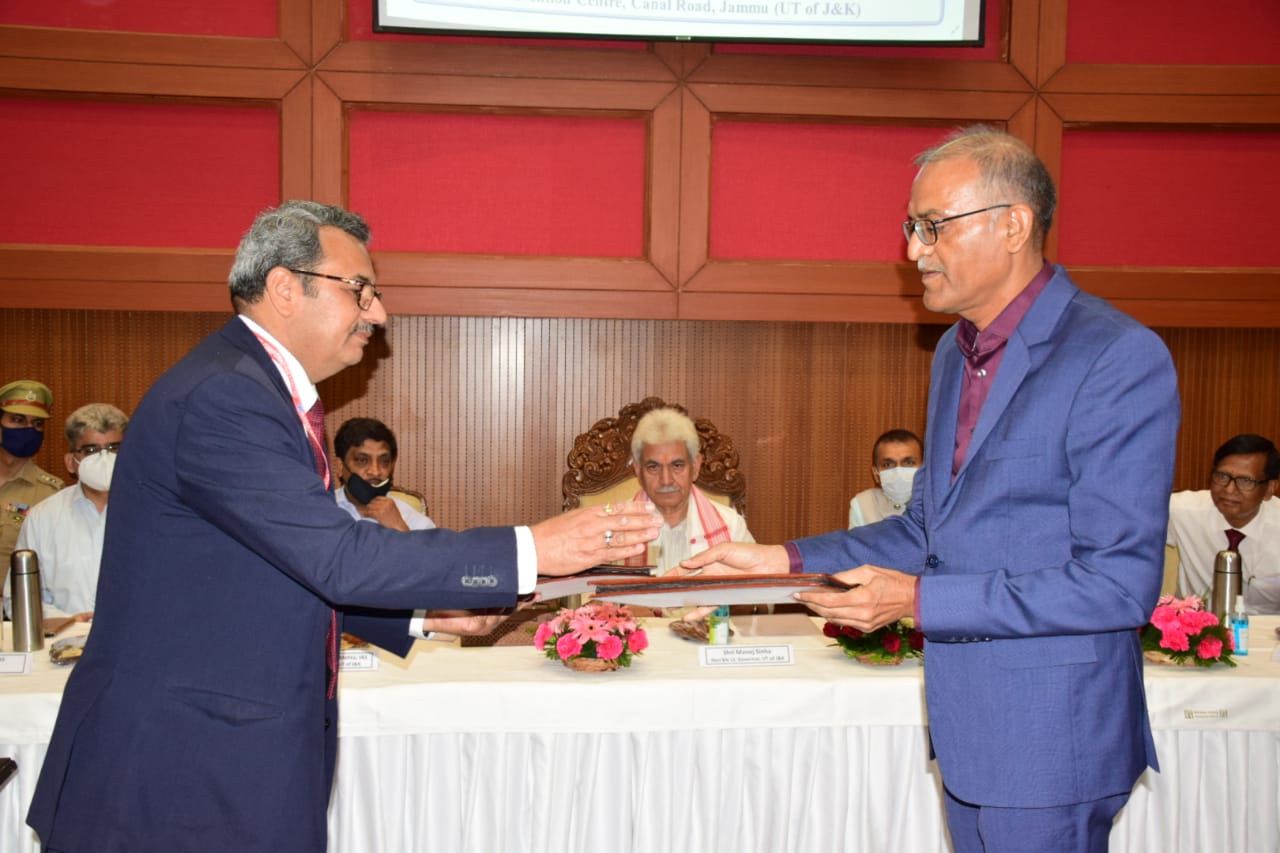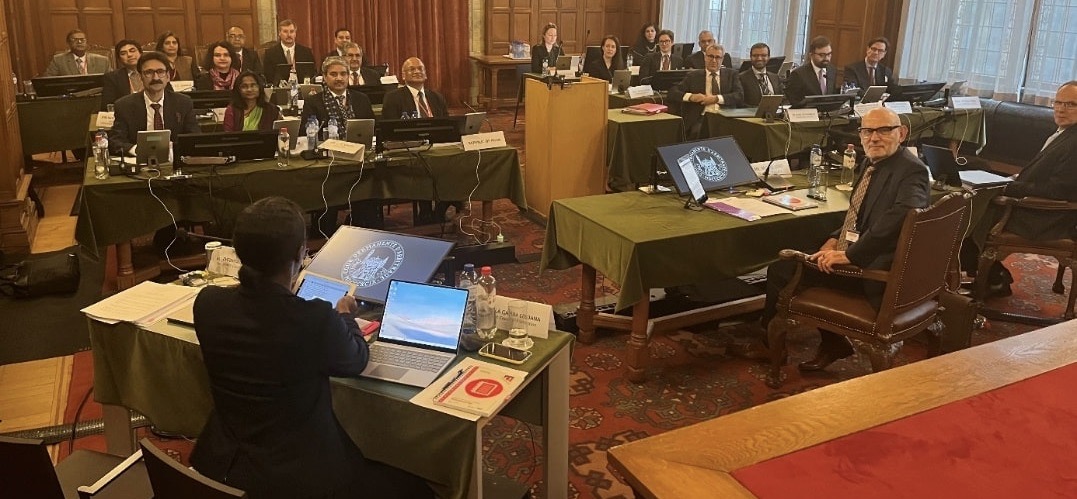Kashmir’s political class is angry as the NHPC-run Ratle Power Project entered into a power purchase agreement with Rajasthan utility for 40 years, creating a new precedent for a project that has only 35 years of active life, writes Masood Hussain

“When it comes to installation of smart meters, where one has to pay money in advance, we are chosen first, and when it comes to power generated from our hydro-electric power projects, it is given to Rajasthan,” Omar Abdullah, former Chief Minister told reporters. “It is the first time that I have heard of electric power allotment for 40 years. Let the assembly elections be held here, we will see to it that the electric power from the Ratle project does not go to Rajasthan. Even if we have to take the issue to the Supreme Court, we will do that.”
Omar was not alone in reacting to a recent decision. “At a time when J&K is facing a severe power crisis never witnessed before our hydroelectric resources are being outsourced to other states,” his successor, Mehbooba Mufti wrote on X. “Yet another decision that will rob people of basic amenities with an intention to collectively punish inhabitants of J&K.”
“At a time when the entire Jammu and Kashmir is facing an acute electricity crisis, especially in its rural areas, the reported leasing out of electricity from Ratle Power Project Kishtwar to Rajasthan is quite puzzling,” Altaf Bukhari of the Apni Party said. “The J&K administration has off and on came on record claiming that it has been buying the power supply from other states to meet the demands in the union territory, while at the same time leasing out its own supply to another state is beyond comprehension.”
Two Major Events
In water-abundant, energy-deficit Jammu and Kashmir, the energy sector is back in debate and the focus is on 850-MW Ratle, the upcoming hydropower project being implemented in the Chenab basin. This hydropower project has the dubious distinction of never being out of controversy, ever since it was conceived.
The project was in the news twice in the recent past.

On November 7, 2023, Megha Engineering and Infrastructures Ltd (MEIL), a Hyderabad-based company implementing the project (it is also implementing the Zoji La tunnel) stopped the work. They even put a closure notice on its gate. It attributed the halt to the work to the “lack of work culture”, frequent stoppage of work, manhandling of MEIL staff and dharna and strikes by “local influential persons”.
“All dues of the employees and the stakeholders will be dealt with as per the law of the land,” the notice, announcing the project closure indefinitely, said.
It was only after the intervention by the local administration, that reports reaching from the area suggested that the work was resumed. The company was assured that their grievances would be taken care of on priority. The administration arranged a meeting between the company managers and the trade union and settled the issues, for the time being.
The project was again in the news on January 3, when the Ratle Hydro Electric Power Corporation Limited (RHPCL) took to the X and announced that it has entered into a Power Purchase Agreement (PPA) with Rajasthan Urja Vikas and IT Services Limited, for off-take of power generated from 850 MW Ratle Hydroelectric Project, Kishtwar in Jammu and Kashmir.
“The agreement has been signed for off-take of power for a period of 40 years from the Commercial Operation Date (COD) of the project and as per power allocation to be notified by Ministry of Power, Government of India,” the Press Information Bureau (PIB) said in a statement. “The PPA was signed in Jaipur on 3rd January 2024 in the presence of senior officers of RHPCL and Rajasthan Urja Vikas and IT Services Limited.”
It triggered quick reactions. “Normally power purchase agreements usually last for a maximum of 20 years,” the spokesman of the JKNC said. “In this case, they are signing it for 40 years at a pre-negotiated price which is also unknown.” He said the agreement gave “a feeling of betrayal” and “added to the looming scepticism”.
A Novel Project
Located near Drabshala, in between the upstream Dul Hasti Power Project and the downstream Baglihar Power Project, the Ratle has always been an interesting idea. It displaced only 240 families and would come up within a few sq km area, unlike Kishanganga which starts in Gurez and concludes in Bandipore. None of its four headrace tunnels crosses 200 meters in length and its longest of the four tailrace tunnels was supposed to be 378 meters and a dam coming up within 200 meters area only. Most of the project is located almost on the main road, requiring only heavy bridge connectivity.
The project’s entire spade work was over by the time Ghulam Nabi Azad demitted office. The JKSPDC was hugely encouraged by the successful implementation of Baglihar and decided to implement it on its own. Omar Abdullah’s government opted for innovative bidding based on the tariff, perhaps for the first time in India. Hyderabad-based GVK Development Projects Pvt Ltd bagged the project on May 31, 2010.
The deal was fascinating. The developer took the Rs 6450 crore project by offering an upfront premium of Rs 5 lakh per MW, 16 per cent generation as royalty (including one per cent for local area development), levelised tariff of Rs 1.44 per unit and Rs 380 crore as terminal price to be paid to the developer at the end of 35 years for transferring the project back to the state. Dr Manmohan Singh, the then Prime Minister, flew to Kishtwar to lay the foundation stone.
The active life of the project, post-commissioning, was 35 years and it was eventually to return to the state at a price fixed four decades earlier. The tariff was the cheapest, only after the Salal energy.
From the project, supposed to get into generation in early 2018, Jammu and Kashmir would draw 16 per cent of energy as royalty and 55 per cent of the balance energy as per PPA leaving the rest for the company as merchant energy.
The company started working overtime and the first dividend came during the company’s survey itself. When the project was given to GVK, its capacity was 690 MWs. After the company re-surveyed the project, it increased the capacity to 850 MWs – four units of 205 MW each and a fifth auxiliary unit of 30 MW. The company tied up with French equipment maker Alstom for electro-magnetic parts and with Larson and Turbo (L&T) for the civil works. Bridges were quickly laid and work started on the diversion tunnel (DT) within days.
In 2014 summer, the company halted work. When the negotiations resumed, the company told the owner, the JKSPDC that the eco-system was hostile. Apart from asking the JKSPDC to ensure waiver from water tax, an enigmatic tax that Congress and JKNC imposed on power generation companies, the GVK sought guarantees from the owners about any adverse award from the third party as Pakistan had taken the project design for arbitration under Indus Water Treaty.
There was no possibility of negotiations as the JKSPDC officials came to know that the entire calculation of the company on power sales, especially the merchant energy, was upset by the arrival of cheap solar power in the market. JKSPDC had to play smart in enchasing the Rs 52 crore bank guarantees. The company abandoned the project and a bright experiment failed. It is still fighting a court case against the JKSPDC seeking it must be paid for the work it did on the ground.
The New Masters
On June 19, 2018, the Mehbooba Mufti-led BJPDP government fell and the erstwhile state started being ruled remotely by the central government through the governor. On February 3, 2019, a tripartite Memorandum of Understanding (MoU) was signed between the NHPC, the Jammu and Kashmir’s Power Development Department (PDD) and the Jammu and Kashmir government for the implementation of the 850-MW Ratle Project. Prime Minister, of Narendra Modi, presided over the function. A formal bilateral MoU was signed later.

Though it was said to be a Joint Venture (JV), no details were given, and not even a name was shared. The JV company, however, was incorporated on June 1, 2021, many months after the cabinet approved the necessary investment for the project implementation.
It is now known that the JV has been named Ratle Hydroelectric Power Corporation (RHPCL) and it has a 51 per cent shareholding with NHPC and 49 per cent with JKSPDC. Of its seven directors, three are from JKSPDC, all IAS officers.
In April 2022, RHPCL signed a contract agreement for the implementation of the project with MEIL. The work is almost a round-the-clock affair as the residents feel and take the impact of the blasting underneath. In October 2023, four persons were killed when a landslide struck the project construction site.
The project with an estimated investment of Rs 5281.94 crore (including IDC and FC of Rs 958.06 crore) is expected to generate 3136.76 MUs a year. The first-year tariff and levellized tariff of the power are estimated to be Rs 3.62/kWH and Rs 3.92/kWH, respectively. Part of the work had already been done by the GVK.
The PPP
All major infrastructure projects are debt-funded. No financial closure is possible for power projects that do not have Power Purchase Agreements signed with the potential buyers. That is what is happening in the Ratle case.
Unlike other projects, the details of the PPA agreement are not known. It is against this backdrop that questions are being raised by the political class, which have remained unanswered for the last week now.
The active life of the project is only 35 years and the PPA agreement has been signed for 40 years. Usually, the PPA agreements are co-terminus with the last instalment of debt payments. Once the projects are debt-free, the power generators go to the open market and make better money. Questions are being asked why the RHPCL created a new precedence.
The majority shareholding in the RHPCL gives NHPC the decision-making rights as the other partner holds only 49 per cent. Still, there are three directors of the JKSPDC. Did the directors nominated by the JKSPDC clear the PPA proposal or record a dissenting note, nobody knows. Has JKSPDC any rights over the generation as a 49 per cent owner?
It is also not known, what is the quantum of energy for which the RHPCL and Rajasthan power utility agreed. Is it the entire generation from the project or part of it?
In the first agreement, the GVK had given the Jammu and Kashmir government a 16 per cent royalty on the energy the project would generate. It is not known what the RHPCL will be given. Will it follow the traditional 12.5 per cent or reduce it further? One officer who earlier served the JKSPDC said there has been some waiver on the royalty as well. If that is the case, what would Jammu and Kashmir get out of Ratle?
These questions would require answers from the Jammu and Kashmir administration, especially by the power sector managers. The NHPC has already a questionable track record in Jammu and Kashmir and by resorting to Ratle-type agreements; it is likely to erode its credibility further. The hydropower giant generated 49 per cent of its total energy from Jammu and Kashmir in 2022-23, almost one per cent less than it recorded in 2021-22. Interestingly, almost 15 per cent of its sales revenue also comes from Jammu and Kashmir.
The Off-Shore Battles
As has been the case with almost every power project in Jammu and Kashmir, India and Pakistan are fighting an interesting case against each other involving two projects – the already operational Kishanganga (Gurez) and the upcoming Ratle (Kishtwar). Under the water-sharing World Bank brokered Indus Water Treaty, both countries exchange design details of the upcoming projects through the Permanent Indus Commissions (PIC), established on both sides of the Redcliff divide.
On projects, the PICs ask questions to each other. A ‘question’ under the Treaty is the basic dispute resolution setup that is supposed to happen bilaterally. If the ‘question’ remains unresolved, it becomes a ‘difference’ and the parties can go to the World Bank that appoint a Neutral Expert (NE). If either of the two parties is dissatisfied with the Neutral Expert’s award, the issues become a dispute that is eventually resolved by a Court of Arbitration (CoA). Usually, the NE decides about “technical issues” and the Court takes care of “legal issues”.
Kishanganga apart, Pakistan has flagged various design issues of Ratle, which, she believes violates the Treaty provisions. These include a proposed design for a maximum pondage of 23.86 million cubic meters; the use of low-level sediment outlets in the form of a deep orifice spillway with five large, gated openings far below the Dead Storage Level and deep in the reservoir; gated spillways for flood control with the bottom level of the gates in a normally closed position located approximately 31 meters below the Dead Storage Level and deep in the reservoir.
Claiming to have seen the design first time in 2012, the PICs failed to resolve the differences over design. Later, an interesting thing happened. Pakistan on July 3, 2015, and later on November 12, 2015, sought the appointment of a Neutral Expert. In 2016, both India (October 4, 2016) and Pakistan (August 19, 2016) approached the World Bank – India seeking the appointment of a Neutral Expert and Pakistan appointing a Court of Arbitration.
On December 12, 2016, the World Bank decided to pause the process of following up on the pleas, which was lifted in 2022, following which the World Bank obliged both parties. Michel Lino was appointed as the Neutral Expert and a 5-member Court of Arbitration under Prof Sean D Murphy was empanelled on October 17, 2022. India has consistently asserted that the World Bank decision conveyed the dangerous nature of parallel processes. Though the Bank initially agreed bit it later went back on its decision and erred again.
“For the sake of preserving the sanctity of the Treaty, India expressly declines to accept or recognize the existence of the so-called Court of Arbitration as now proposed,” India formally conveyed. “As a logical corollary of this, the very question of any coordination or cooperation between the Neutral Expert and so-called Court of Arbitration will gravely compound the original error of attempting parallel proceedings, and render illegitimate even the ongoing deliberations by the Neutral Expert.”
This is precisely why Delhi has formally boycotted the CoA at the Hague. Interestingly, both parties attend the NE hearings in Vienna.

The CoA did not take the challenge to its very existence lightly. It deliberated on its competence and issued a detailed verdict in July 2023, asserting its competence regardless of the boycott by the respondent party. “In a unanimous decision, which is binding on the Parties and without appeal, the Court rejected each of the objections raised by India and determined that the Court is competent to consider and determine the disputes set forth in Pakistan’s Request for Arbitration,” the CoA ruled.
Delhi remained unmoved. “Our consistent and principled position has been that the constitution of this so-called court of arbitration is in contravention of the clear letter and spirit of the Indus Waters Treaty. A neutral expert is already seized of the differences pertaining to the Kishanganga and the Ratle [hydropower projects],” MEA spokesman, Arindam Bagchi said. “I don’t think legal sophistry or…a façade is going to compel India to participate in what we think are patently illegal proceedings instituted in contravention of the treaty, that is [at] the Permanent Court of Arbitration.”
Both processes are going on. While the two parties attend the NE, India continues to boycott the CoA. What this diplomacy is going to unfold, remains to be seen.
Post Script
Late Saturday night (January 13), the DIPR issued a long statement “clarifying” the Ratle issue. “J&K’s has signed PPAs for 900 MWs of power from the said projects (four JV projects totalling 3014 MWs), considering the additional requirement of Hydro-based power in the existing power portfolio and the pricing, while for the remaining quantum, the CVPP has signed PPAs with other States,” the statement said, putting the price per unit in the range of Rs 3.93 to Rs 4.64. It means Jammu and Kashmir has signed a PPA with CVPP projects to procure almost 30 per cent of the energy from the JVs, where it has 49 per cent ownership. The statement offers no details about other PPAs that brought the Ratle into the fresh controversy.
The post The New Ratle Debate appeared first on Kashmir Life.
from Kashmir Life https://ift.tt/rqoSVlw
via IFTTThttps://ift.tt/WSi9eYn
No comments:
Post a Comment